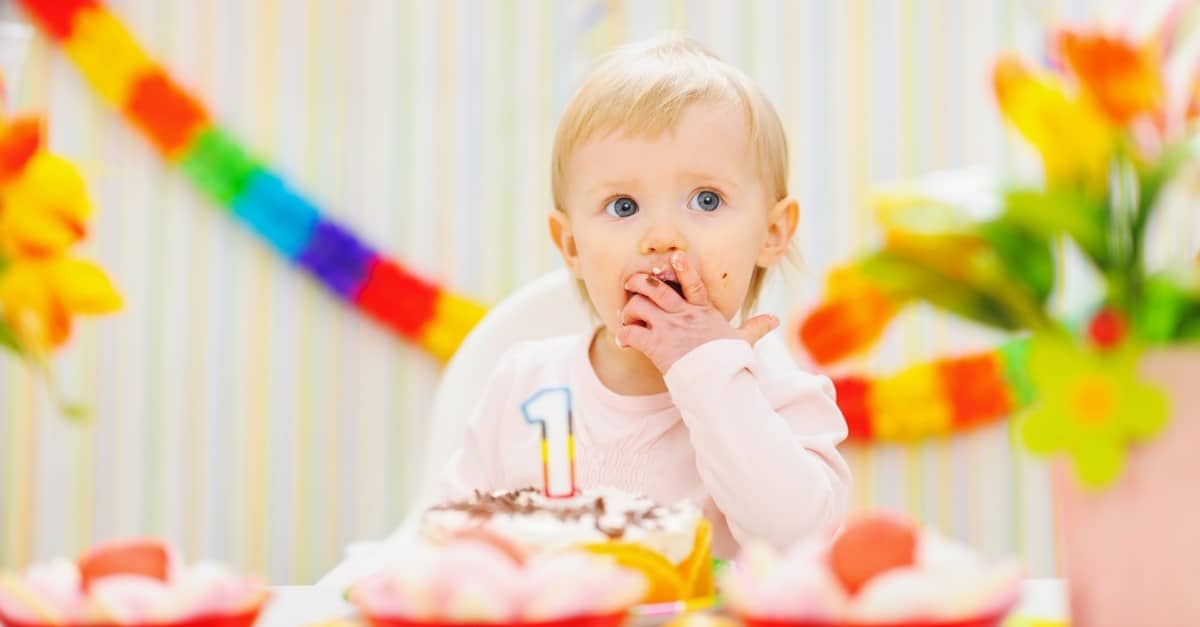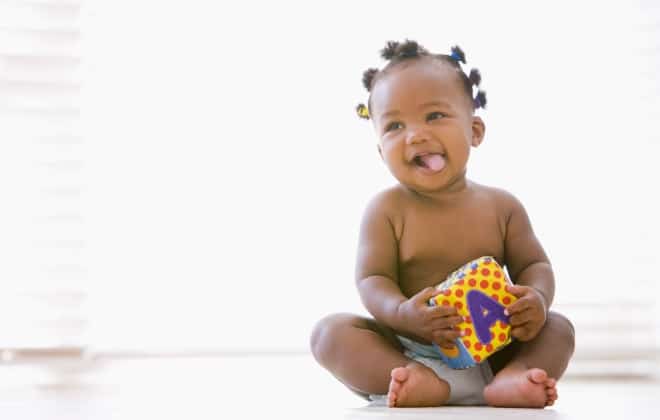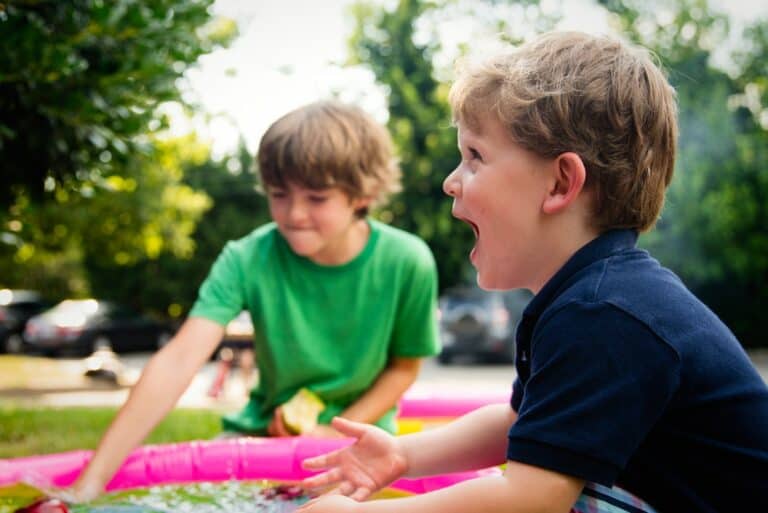Baby Development: The Milestones of a Baby’s First Year

A lot can happen in the first year of baby development. From their initial steps to the first game of peek-a-boo, we have a useful guideline to go by!
The changes that a baby goes through from birth to twelve months of age are nothing short of a miracle! In fact, the first year of a baby’s life is an incredible transformation from newborn infant to toddler. Whether you’re an expectant mother or an excited uncle, learn about what to expect in the first year. Be sure to share your own baby development experiences with others on your favorite family app!
Baby Development: What Are Baby Stages?
Children grow an awful lot in their first year, and it can be hard to know what to expect. While there is a baby development timeline, it’s important to realize that nothing is set in stone. The milestones that occur day-to-day and month-to-month are merely a guideline for your infant’s growth.
According to Jennifer Shu, MD, “If your baby reaches one milestone sooner, she may reach another one later, because she’s so busy perfecting the other skill.” As a parent, knowing there’s wiggle room gives you and your infant a lot of flexibility. However, if you feel like something isn’t right with your baby’s developmental progress, be sure to talk to a doctor.
What Is a Baby’s First-Year Calendar?
Because there is significant baby development each month, you can expect to see a lot in your baby’s first year. As the timeline will differ from child to child, be sure to share your own experiences on FamilyApp!
1. Baby Development Months One to Three
The first few months of the infant development chart are all about your little one reacting to the world around them. While you’ll see your child smiling, it will take a couple of months for them to smile at you. They will also do things like follow objects with their eyes and bring their hands to their mouths. They will start to grip objects with their hands and reach for items they can’t quite get at.
2. Four to Six Months of Age Development
Baby development at 4 months is when they begin to interact with the world around them. They will start testing out their voices and trying to engage through language. The infants will also be grabbing with their hands and be able to work with toys and other objects. When it comes to movement, babies should be able to roll around, sit up and hold their head up. This is also a time many babies might start trying new foods, like bananas or rice cereal.

3. Seven to Nine Months Progress
This is the time of a baby’s development when you’ll need to think about baby-proofing. Your child will likely be on the go, and they’ll be crawling everywhere they can. They may even be able to stand! In addition, your infant will also be able to understand familiar words like ‘yes’, ‘no,’ and their name. They may even say ‘Mama’ or ‘Dada’ for the very first time. At this age, they’ll also have developed enough to be able to play games like peek-a-boo.
4. Baby Development During Months Ten to Twelve
According to the baby development calendar, things will really ramp up as your baby becomes a toddler. They will now have the ability to feed themselves and grasp at small objects with more dexterity. They will also be able to point at objects and will copy things you do, like talking on the phone. By this point, your child may also be saying certain words consistently, like ‘Mama’ or ‘Dada’. Your baby will also be able to walk around while balancing against furniture and might be taking their first steps!
The baby development that occurs for newborns under the age of one is nothing short of extraordinary. And, while there are parenting guidelines to go by, it’s important to remember that every child is different. Do you have a memorable story about your baby’s first year? Share it with us on our Facebook or Instagram social media accounts. From their first words to those struggling first steps, there’s nothing like learning the world again through them!





